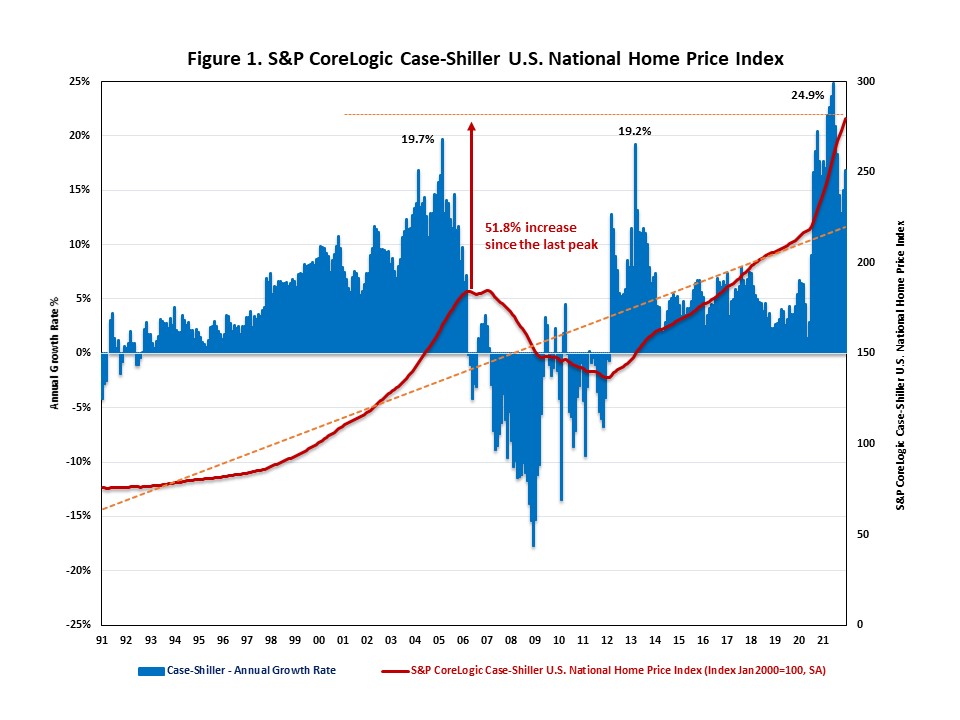National home prices grew at an unsustainable pace in December, supported by strong demand and record-low inventory. Home price appreciation is expected to slow in the coming quarters as rising mortgage rates price some homebuyers out of the market.
The S&P CoreLogic Case-Shiller U.S. National Home Price Index, reported by S&P Dow Jones Indices, rose at a seasonally adjusted annual growth rate of 16.9% in December, following a 15.1% increase in November. National home prices are now 51.8% higher than their last peak during the housing boom in 2006. On a year-over-year basis, the S&P CoreLogic Case-Shiller U.S. National Home Price NSA Index posted an 18.8% annual gain in December, the same increase as in November. Home price appreciation (YOY) has slowed since September 2021.
Meanwhile, the Home Price Index, released by the Federal Housing Finance Agency (FHFA), increased at a seasonally adjusted annual rate of 15.6% in December, following a 15.3% increase in November. On a year-over-year basis, the FHFA Home Price NSA Index rose by 17.7% in December, the same gain as in November.

In addition to tracking national home price changes, S&P CoreLogic reported home price indexes across 20 metro areas in December. All 20 metro areas reported positive home price appreciation and their annual growth rates ranged from 8.6% to 34.4%. Among all 20 metro areas, thirteen metro areas exceeded the national average of 16.9%. San Diego led the way with a 34.4% increase, followed by Seattle with a 27.1% increase and Dallas with a 26.8% increase.
The scatter plot below lists the 20 major U.S. metropolitan areas’ annual growth rates in November and in December. The X-axis presents the annual growth rates in November; the Y-axis presents the annual growth rates in December. Five out of the 20 metro areas had a deceleration in home price growth, including Los Angeles, Miami, Tampa, Las Vegas, and Seattle.

Discover more from Eye On Housing
Subscribe to get the latest posts sent to your email.
